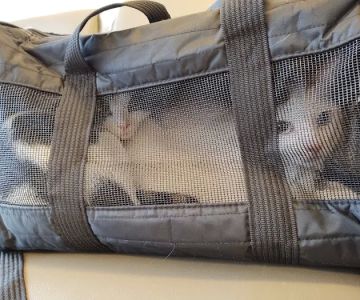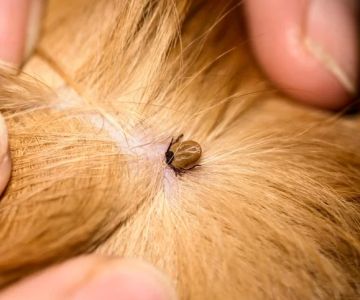- Introduction: The Importance of a Pet First Aid Kit
- Basic Supplies Every Pet First Aid Kit Should Have
- Dealing with Specific Pet Emergencies
- First Aid Knowledge Every Pet Owner Should Have
- Where to Buy a Pet First Aid Kit
- Conclusion: Preparing for the Unexpected
Introduction: The Importance of a Pet First Aid Kit
As a responsible pet owner, one of the most important things you can do is ensure that your pet is protected in case of an emergency. Pet health emergencies can happen at any time, and being prepared with the right tools and knowledge can make a significant difference in the outcome. A pet first aid kit is an essential part of your pet care routine, providing the necessary supplies to help you address injuries, illnesses, or accidents until professional veterinary care is available.
In this article, we’ll go over the essential items that should be included in a pet first aid kit, discuss how to use them in various situations, and offer some tips on where to buy these items. Whether you’re a new pet owner or a seasoned one, being well-prepared for emergencies can give you peace of mind and help keep your pet safe.

1225 Warren Ave, Downers Grove, IL 60515, USA
See DetailsBasic Supplies Every Pet First Aid Kit Should Have
When creating a pet first aid kit, it's important to include the essential supplies that can be used in a variety of emergency situations. Below are the most common and necessary items that should be part of your kit:
1. Gauze and Bandages
Gauze pads and bandages are essential for treating cuts, scrapes, or wounds on your pet. They help stop bleeding and protect the injury from infection. Be sure to have a variety of sizes to accommodate different injuries, from small cuts to larger lacerations.
2. Adhesive Tape
Adhesive tape is crucial for securing bandages in place and preventing them from falling off. Make sure to use pet-safe tape that won't irritate your pet's skin.
3. Tweezers
Tweezers are useful for removing splinters, ticks, or other foreign objects from your pet’s skin. Be sure to have a pair that is fine-tipped and strong enough to grab small objects securely.
4. Thermometer
A thermometer is an important tool for checking your pet's temperature, which can help you determine whether they have a fever or are suffering from other health conditions. It’s best to use a digital thermometer designed for pets to ensure accuracy.
5. Antiseptic Wipes and Saline Solution
Antiseptic wipes or saline solution are essential for cleaning wounds or scrapes. They help prevent infection by killing bacteria and cleaning the area. Make sure to use pet-safe antiseptics to avoid irritating your pet’s skin.
6. Cotton Balls or Pads
Cotton balls or pads are useful for applying antiseptics, cleaning wounds, and wiping away dirt or debris from your pet's skin. These are gentle on your pet's sensitive skin and can be used effectively in a variety of situations.
Dealing with Specific Pet Emergencies
While having the right tools in your pet first aid kit is important, it’s equally crucial to know how to use them in specific emergency situations. Below are some examples of situations where your pet first aid kit can be a lifesaver:
1. Wound Care
If your pet gets a cut, abrasion, or scrape, you can clean the wound with antiseptic wipes or saline solution. After cleaning, apply a gauze pad and secure it with adhesive tape. Monitor the wound for signs of infection, such as redness, swelling, or discharge.
2. Insect Stings or Bites
If your pet is stung by an insect or bitten by another animal, the first step is to remove the stinger (if present) with tweezers. You can apply a cold compress to the affected area to reduce swelling and pain. If your pet shows signs of an allergic reaction, such as difficulty breathing, seek immediate veterinary attention.
3. Heatstroke
Heatstroke can occur if your pet is exposed to extreme heat for extended periods. Symptoms include excessive panting, drooling, and lethargy. To treat heatstroke, move your pet to a cool area, offer fresh water, and dampen their body with cool (not cold) water. If symptoms persist, contact your vet immediately.
4. Poisoning
If you suspect your pet has ingested something toxic, it’s important to act quickly. Keep your pet calm, and try to identify what they consumed. Call your veterinarian or an emergency animal poison hotline for guidance. In some cases, your vet may recommend inducing vomiting or providing activated charcoal to help absorb the toxin.
First Aid Knowledge Every Pet Owner Should Have
While having the right supplies is crucial, it’s equally important to understand basic first aid techniques. Here are some basic skills every pet owner should know:
1. How to Perform CPR on a Pet
Learning how to perform CPR on your pet can be lifesaving in emergencies, such as if your pet stops breathing or their heart stops beating. Knowing the proper technique and when to seek help can make a significant difference in your pet’s survival rate.
2. How to Apply Pressure to Stop Bleeding
For serious wounds, applying pressure to stop bleeding is critical. Use a clean cloth or gauze and apply steady pressure until the bleeding stops. If the bleeding doesn't stop after several minutes, seek immediate veterinary care.
3. Recognizing Signs of Distress
Understanding the signs of pain, shock, or distress in your pet can help you take immediate action. Symptoms like rapid breathing, weakness, or unresponsiveness should be treated as emergencies that require professional medical attention.
Where to Buy a Pet First Aid Kit
Pet first aid kits can be purchased from a variety of retailers, both in physical stores and online. Many pet supply stores, as well as larger online platforms like Amazon, offer pre-packaged pet first aid kits that include most of the essential items listed above. Alternatively, you can assemble your own custom first aid kit based on your pet’s specific needs.
At [Hidden Brook Veterinary], we offer a range of pet first aid kits and individual items that can help you build the perfect kit for your pet. Whether you’re looking for a ready-made kit or the tools to customize your own, we’ve got you covered.
Conclusion: Preparing for the Unexpected
Having a well-stocked pet first aid kit is a must for every pet owner. Accidents and health emergencies can happen at any time, and being prepared can make a significant difference in your pet's recovery. By understanding what items to include in your kit and learning some basic first aid techniques, you can ensure that your pet receives the best care in times of need.
Start building your pet’s first aid kit today and give yourself the confidence that you’re ready to handle any emergency that comes your way. Visit [Hidden Brook Veterinary] for more pet care products, advice, and recommendations to ensure your pet’s health and safety.










